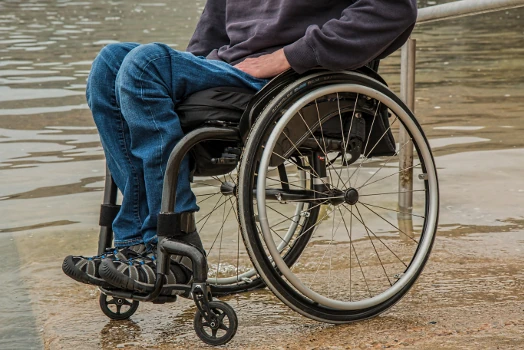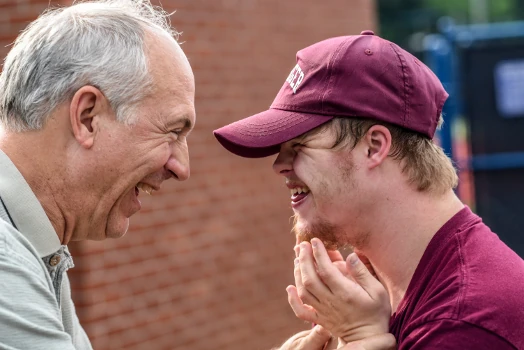Massage Therapy for People with Developmental Disabilities
Thursday, April 12, 2018, 04:40 PM
Massage therapy is the leading complementary therapy used by Canadians, with the Fraser Institute reporting that 44% of people had treatments in 2016. Extensive research shows that the benefits of massage therapy include reduced stress, anxiety, and chronic pain.
Many people use massage therapy as part of their ongoing health and wellness routine. It can be used proactively to prevent illness, help manage mental health issues, and as treatment for chronic pain or an injury.

Many people with physical disabilities actively use massage to promote circulation, increase range of motion, improve flexibility, and manage discomfort. However, for people with developmental disabilities, the positive effects of massage therapy are often overlooked.
Developmental Disabilities
Developmental disabilities begin in the development stage of a person's life and are often detected at a very young age, at birth, or even in utero.
The US Department of Health and Human Services defines developmental disabilities as "a group of conditions due to an impairment in physical, learning, language, or behaviour areas." The conditions usually last throughout a person's life.
Some common conditions that fall under the umbrella of developmental disabilities are autism, cerebral palsy, Down syndrome, and fetal alcohol syndrome.

Inclusive Treatments
Christina Lloyd is a massage therapist in Saskatchewan. She also works as a support worker in a group home that advocates for people with developmental disabilities.
As a massage therapist, Christina's main focus is to help her clients feel better by improving their sense of well-being. She noticed some barriers between her clients in the group homes and access to complementary therapies such as massage.
"It is sometimes difficult to connect a person with a developmental disability to the right therapist for them," says Christina. She explains that in order for a treatment to be successful, the therapist must be mindful of the unique challenges that the client has, and that building trust is of elevated importance.
Christina also notes that as the therapist, you must always be receptive to both verbal and non-verbal communication, especially with those experiencing communication barriers.
"It is no different than working with someone who was in a car accident or who has mobility issues," Christina says.
"As professionals we must adapt our treatments to be most beneficial to our clients. When working with people with developmental disabilities, it means we must adapt our approach to also include cognitive or behavioural conditions."
Christina has an advantage in this situation: the clients who live in the group homes are comfortable with her. The relationships she has built help her clients relax during their treatments, and that is when the healing takes place.
"I provide treatments where and how my clients feel most at ease," Christina explains. "That can mean they choose to be in their bed or a chair, receive a shorter treatment, talk throughout the treatment, remain fully clothed, or have another support person present."
Staff members report that after a massage therapy session, the clients are more relaxed, sleep better, and have fewer behaviour difficulties.
Supporting Research
Research supports the observations of the staff working in the group homes where Christina provides treatments.
The Institute for Integrative Health Care reports that people with developmental disabilities struggle with social interactions and can suffer from anxiety and depression. It cites that massage therapy has been proven to reduce stress, and can therefore help to reduce behavioural issues.
A study on how the behaviour of children with autism improves after massage therapy reports that massage therapy can improve sleep, improve social interactions, and reduce stereotypic behaviour in people with autism.
Another research article detailing how massage therapy benefits children with Down syndrome suggests that when included in an early intervention program, massage can improve motor functioning and increase muscle tone in children with Down syndrome.
Find a Practitioner
There is much research supporting the benefits of massage therapy on both the physical and mental self. For people with developmental disabilities, those benefits are dependent on a trusting, comfortable, and sensitive client-therapist relationship.
Talk to your healthcare provider for more informaiton about the benefits of complementary therapies for people with developmental disabilities.
Find a massage therapist or other holistic health practitioner in your area using the NHPC Member Directory.

